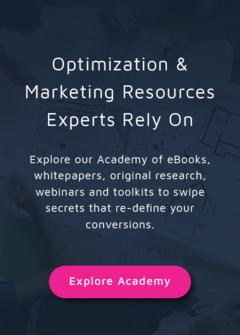4 Ways to Optimize Facebook Ads to Skyrocket Your Conversions
Why do you need to optimize your Facebook Ads?
Because you can reach a staggering 2.09 billion users monthly through well-optimized Facebook Ads.
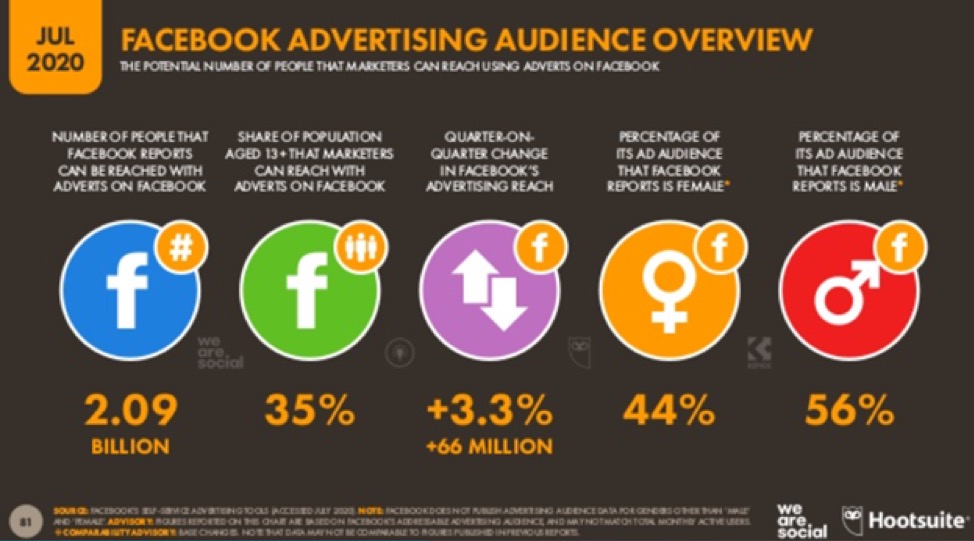
Compared to other social networks, the reach of Facebook Ads is unparalleled.
You can drive qualified traffic to your website or social media pages through Facebook Ads. You can reach high-potential audiences with offers that are designed to engage and convert. This kind of granularity is impossible to achieve through organic posts. You can really stretch your marketing budget by investing in ads.
What’s more?
Facebook’s advertising platform offers robust analytics about audience engagement on Ads. By analyzing your ad-engagement data, you get insights about your audience’s tastes and needs, which helps you serve them better. When you serve on-point content, your conversions are bound to increase.
However, all of the above benefits are available only to advertisers whose Facebook Ads are optimized for the platform and its audiences. To help you create striking, resultful Facebook Ads, I’m going to explain four effective strategies. Let’s get started.
4 Facebook Ad Optimization Hacks to Multiply Your Conversions
Most people who use tools for Facebook marketing are able to optimize their advertorial campaigns without much hassle. But if you don’t have that advantage, you can use these hacks to get the same results:
1. Include Eye-Catching Visuals in Your Ads
Visuals can help improve your ad’s click-through rate (CTR).
How so?
For one, powerful visuals stand out on overcrowded platforms like Facebook. If you use graphics like GIFs, animations, and videos, all that motion can stop users mid-scroll and tempt them to click on your ads.
In fact, 73% of people love to see video content from brands on social media. That’s why Facebook is amongst the top three platforms (apart from Instagram and YouTube) where marketers use video ads heavily.
Need inspiration?
Take a cue from Sephora’s video ad, which garnered a 41% higher CTR than their previous video-free ads.
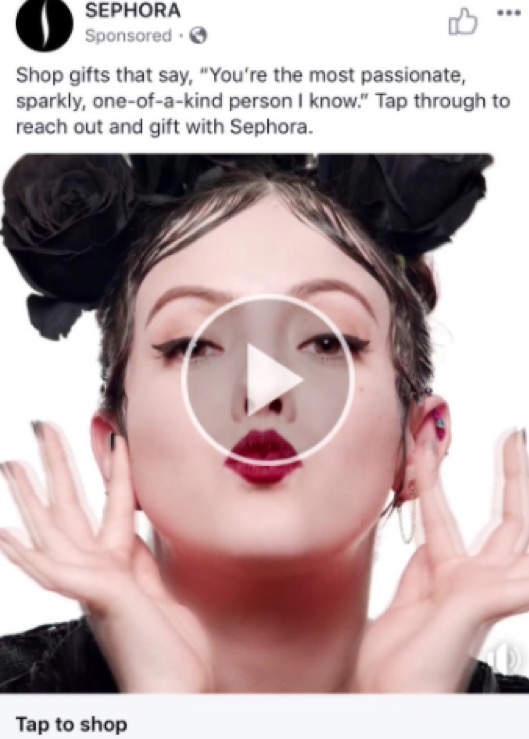
The ad produced a 32% higher return on investment (ROI) than any of their other campaigns. That’s quite a strong case for including videos in your Facebook Ads.
Regardless of the format you choose to include, ensure that you design your visuals well.
What does that mean?
For example, color plays a huge role in visual design. Colorcom looked at the psychology of colors in marketing in their study “Why Color Matters.” They discovered that colors improve brand recognition by 40%. That’s why you have a meditation app like Calm using tranquil shades of blue and green in their app background and Facebook Ads.

On closer inspection, I found that they use the same signature colors in their entire feed.
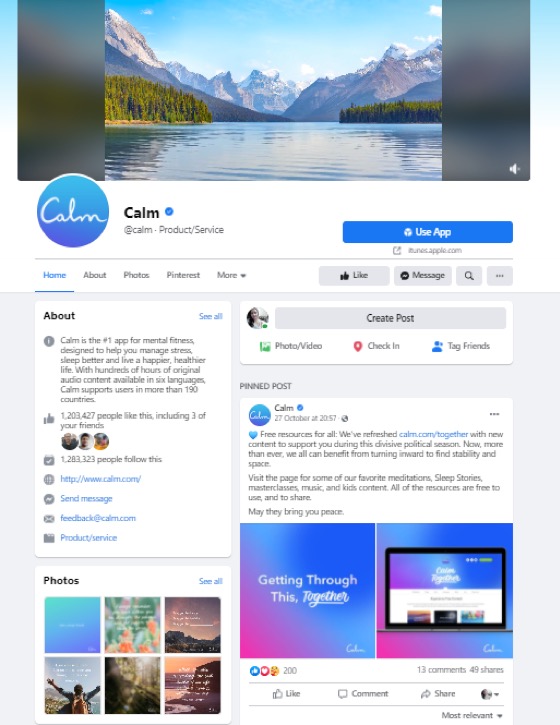
Obviously, the smart marketers at Calm understand how to put their brand front-and-center by playing with colors.
Whatever you choose to do visual-wise, refrain from including low-resolution images in your Facebook Ads. They reflect poorly on your brand image and can turn off users in a big way.
One more thing…
Be sure to test your ad creative on various mobile devices to check how it renders on different screen sizes.
2. Write Crisp Ad Copy
Your ad copy should be persuasive, crisp, and action-oriented.
I can’t over-emphasize the importance of optimizing your ad copy. Through your ad copy, you convey your value proposition and instruct users on the next steps. But you need to be really clever while creating ad copy.
Why so?
Because flighty social media users generally don’t bother to read long captions. At the same time, you can’t shorten the caption so much that the clarity is compromised. Find the sweet spot by:
- Breaking text into bullets
- Varying typography
- Highlighting calls-to-action by using bright colors and shapes
- Using phrases like “Buy Now,” “Grab Your Seat,” etc. to create urgency
Here’s a perfect example of simple but effective ad copywriting by AirAsia:
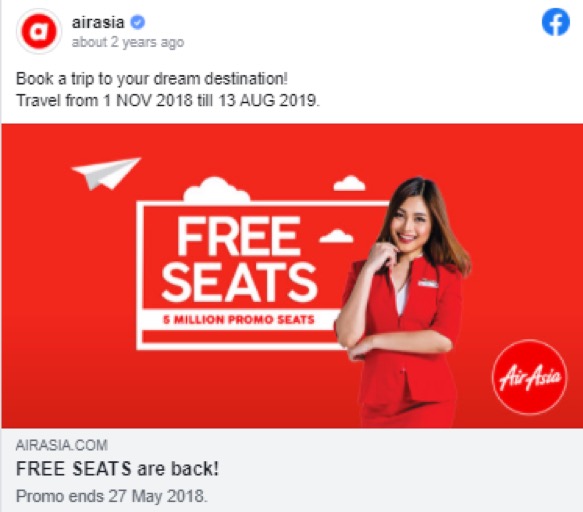
Though the image is a static one, the white-on-red image copy is eye-catching. Plus, it succinctly explains the offer, using words like “FREE SEATS” and a deadline to create a sense of urgency.
Want a pro tip?
Include questions in your copy to engage people. This discussion-based ad by Loot Crate doesn’t sound salesy but got people clicking all the way to their product pages.
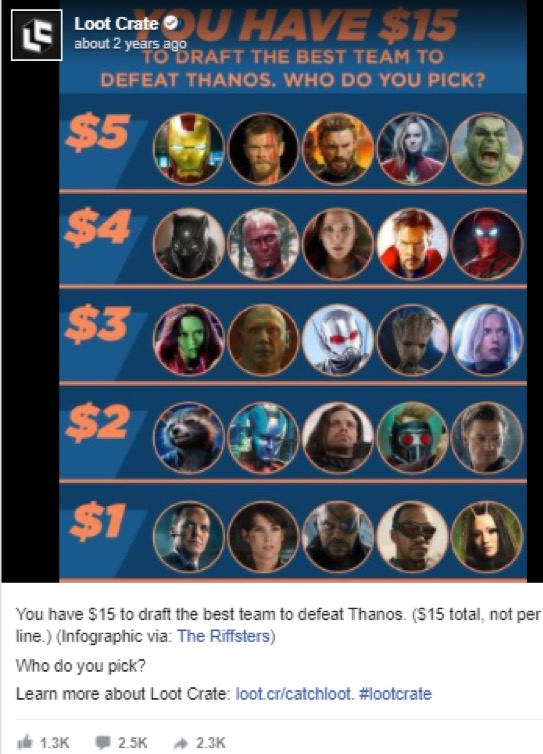
Consider teaming up with experienced copywriters who can help you craft ad copy that effectively conveys your message and converts visitors.
3. Select the Right Ad Format
Facebook offers a variety of ad formats to choose from – Carousel Ads, Native Ads, Display Ads, Banner Ads, Video Ads, Link Ads, and more.
The ad format you choose will depend on your advertising goal and campaign budget.
For instance, if you want to showcase multiple products in one ad, Carousel Ads may be your best choice. Here is a Carousel Ad by Blinkist, the book-summary app:
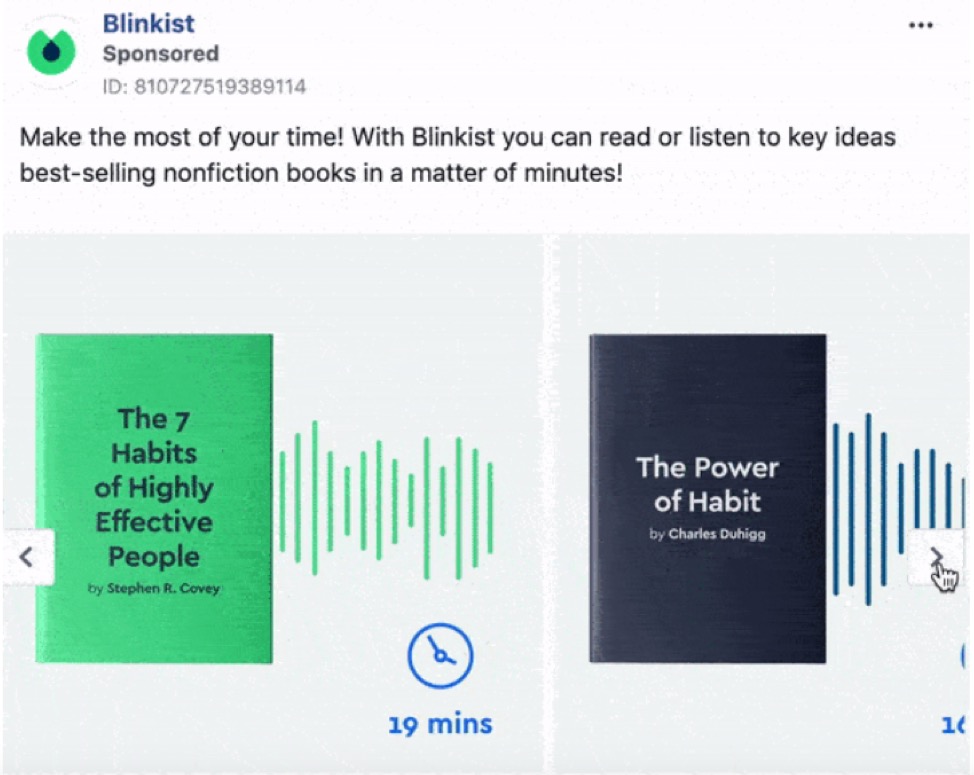
If you want your ads to blend in with Facebook’s organic content, choose Native Ads. They are difficult to spot, which is why their CTR and engagement are higher than most other ads.
I have some advice for people opting for Native Ads. These ads adhere to their host platform’s editorial style and tone so perfectly that users assume them to be organic.
Ensure that you disclose the sponsored nature of your Native Ads if you don’t want to attract penalties by the Federal Trade Commission (FTC). In Contently’s Summit last year, Time magazine’s Innovation Director, Erik Goeres, summed up the situation with Native Ads perfectly by these words: “Don’t trick them. Don’t piss them off.”
If you need a great example of native advertising, take a look at Toyota’s “Try My Hybrid” campaign. Using Native Ads, the car brand was able to generate buzz around their hybrid cars in Norway and generate many warm leads.
4. Track and Analyze Your Ad Performance
Your job doesn’t end with running your ads. You need to monitor their performance using social media monitoring tools.
But why?
By analyzing your ad performance, you can pinpoint precisely how well your ads were received and who clicked on your ads. Using these insights, you can identify high-potential audience segments for future campaigns.
If you A/B test your ads and monitor the performance of each ad variant, you will know which of them resonates best with your target audience. This way, you can optimize your future ads for better conversions.
Ready to Optimize Your Facebook Ads?
Whether you’re already investing in Facebook Ads or planning to do so, ensure that your ad campaigns have clear goals and well-defined conversion events. Once you do that, apply the best practices I’ve explained above and watch your conversions soar.
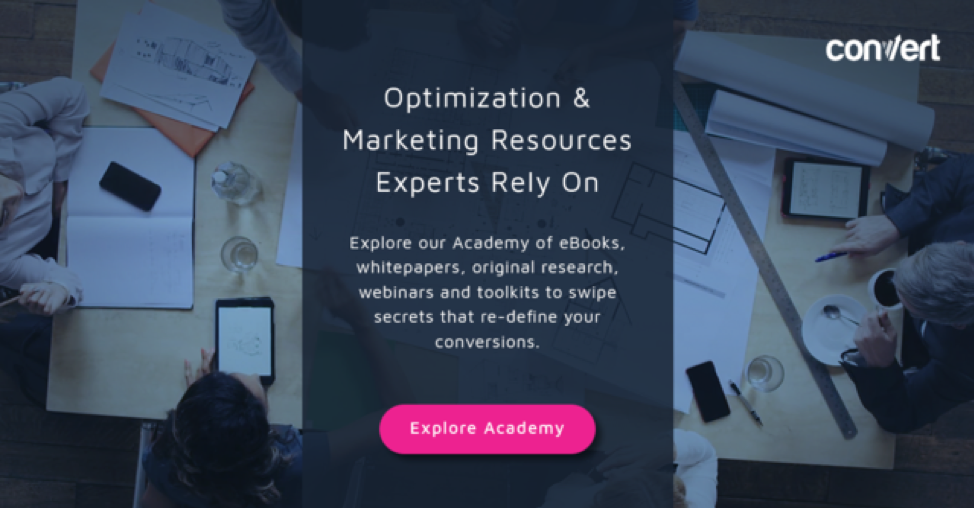
Written By
Shane Barker

Edited By
Carmen Apostu

